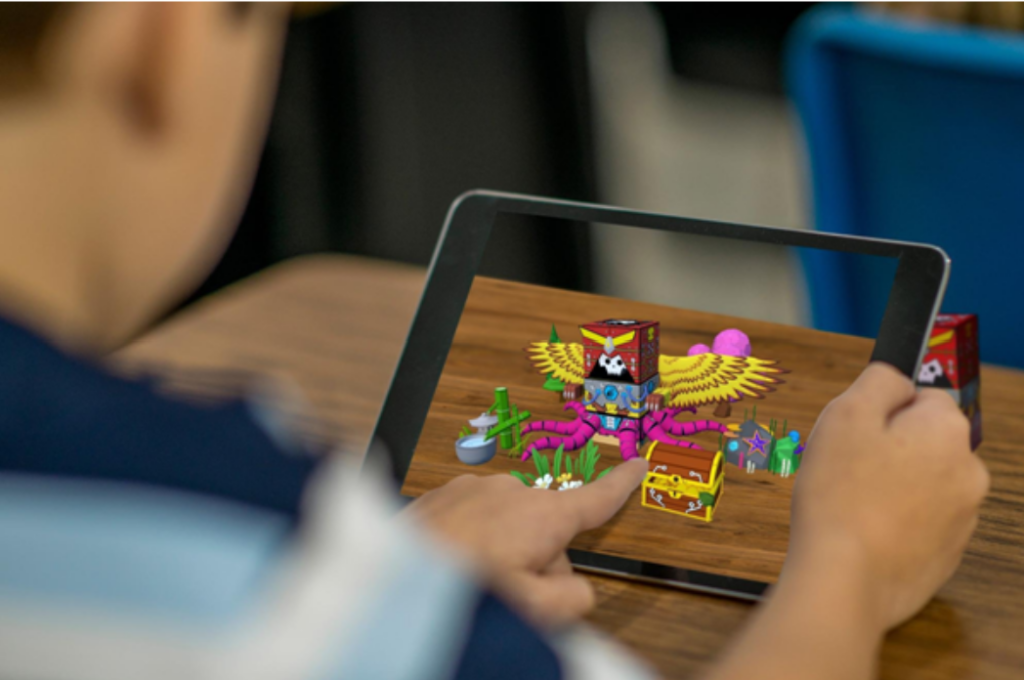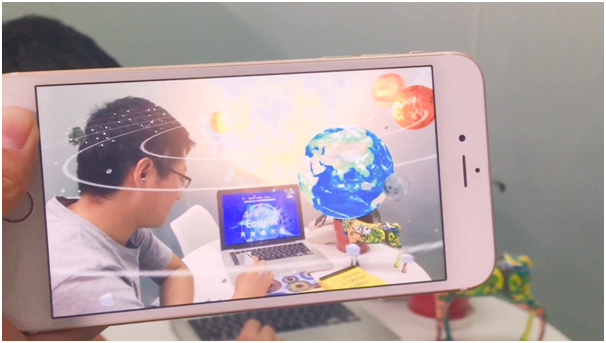AR application to multi-media teaching
AR appears in our life mostly for leisure and entertainment. Before learning the topic of this lesson, I did not associate AR with multimedia teaching. If AR is applied to multimedia learning, I think it will be more exciting for students. First of all, AR will have a visual impact on people, and the 3D sensation it creates will make students immerse themselves in the world. It enhances the learning experience and interactivity. It would be easier to manipulate, as the teacher could operate the virtual device through gestures or sound. If AR is combined with gamification, each lesson will leave data of each student for assessment. This gives the teacher a clear picture of how well the students are mastering their learning. Secondly, AR devices can provide a more suitable teaching environment for teachers and students. For example, teachers can’t take students to the sea to watch and feel marine life in person in navigational biology learning. This causes cost not only less but also safety problems cannot be guaranteed. The textbook and PowerPoint lecture format also can not let students fully understand. With AR technology, students can fully experience and explore without going out of the classroom. This can save a lot of teaching practice and improve learning efficiency.
AR Tools for App Development
In addition to some of the AR tools mentioned in this unit, I also explored some other interesting AR tools.
#1 Vuforia
Vuforia is an advanced AR building engine for augmented reality applications on Android and ios platforms. Vuforia is used together with Unity3D to create AR applications. Vuforia provides printable image targets that will appear as 3D objects created in Unity3D. [1]
The detailed creation process can be found at: Building AR apps with Unity3D and Vuforia — Jasoren
#2 Google ARCore
ARCore is an AR experience device that provides various tools to understand objects in the real world. These tools include environment understanding, which allows the device to detect horizontal and vertical surfaces and planes. They also include motion tracking, which enables phones to track the position of the world they are relative to. ARCore will add a more contextual and semantic understanding of people, places, and things as it improves. [3] ARCore can be used with multiple users to experience AR on Android and ios.
For more information, please refer to: Google AR & VR | ARCore
#3 EasyAR
This is an impactful augmented reality application that includes a robust Software Development Kit (SDK). EasyAR takes advantage of marker technology to scan and recognize images in your app. You may also make an augmented reality puzzle game. Manipulate instantiated 3D models on targets paper images of targets. [4]
For more information, please refer to: Marker-Based AR Apps for Beginners with EasyAR – Zenva Academy
References:
[1] Senum, D. (2019, June 12). How to make an augmented reality app with Vuforia and Unity3D. Jasoren. Retrieved November 17, 2021, from https://jasoren.com/making-an-ar-app-with-vuforia-and-unity3d/.
[2] Som, R. (2019, March 27). Top 10 AR tools for app development. Medium. Retrieved November 17, 2021, from https://arvrjourney.com/top-10-ar-tools-for-app-development-6dab56a833db.
[3] Google. (n.d.). Arcore. Google AR & VR | ARCore. Retrieved November 17, 2021, from https://arvr.google.com/arcore/.
[4] Marker-based AR apps for beginners with easyar. Zenva Academy. (n.d.). Retrieved November 17, 2021, from https://academy.zenva.com/product/easyar-and-marker-based-apps-for-beginners/.


